Exhibition Essays
Something felt, something shared
May 2015
Lovesong for Carmen Hermosillo
Simon Gennard
I want to tell you about Carmen. There are so many ways it could go wrong. I might turn her into a martyr. Or an object of curiosity. I might put words into her mouth, or turn her from a person into a symptom in the service of a dubious argument. I want to remember her as both prophet and as someone overwhelmed by the task of imagining new kinds of attachment. It is possible she may be neither.
Carmen was on the internet before it was called the internet. In the early 90’s Carmen was active on the WELL message board. She called herself humdog. The WELL was a new kind of network, in which individuals from disparate locations were able to interact through a virtual interface. It was giddy, at times, with all the hyperbole that accompanies leaps in the direction of unknowable potential. In a 1994 essay, Carmen wrote of a tendency among WELL users to speak of cyberspace "as though it were a 60’s utopia."1
The WELL is an acronym. It stands for Whole Earth ‘Lectronic Link. It is the offspring of a strange publication that existed in the late 1960’s, The Whole Earth Catalog. What began as a 61 page booklet of classifieds and reviews grew staggeringly fast into a twice-yearly journal publishing essays of countercultural rhetoric, showcases of new technologies, dubious opinion, and critical theory. Carl Sagan published articles, as did The Black Panther Party, as did a lot of other people whose names don’t sound familiar to me. Regular publication ceased after 1972, but it continued to appear sporadically. Fifteen years later, the Catalog appeared online, as the WELL, bringing with it a fanatical, technologically literate community of readers.2 Artist Ramón Sender Barayón described the WELL in exactly the utopian terms Carmen notes. “It reminded me of the Open Land communes I’d been to in the 1960s.” he says, “The tribal need is one our culture doesn’t recognise; capitalism wants each of us to live in our own little cubicle, consuming as much as possible.”3
Carmen’s 1994 essay caused quite a stir. This utopia, she revealed, was something of a myth. Whatever pathos there was to be found in this space, it was mediated by less than noble interests. "I have seen many people spill their guts on-line," she writes, "and I did so myself until, at last, I began to see that I had commodified myself." It seems prophetic now that Carmen would be so quick to voice a certain anxiety, an anxiety that by now seems belated, spoken so often as to render it ineffective. There are certain things we know: that everything, once disclosed, belongs to someone else, or that even the most inconsequential of gestures—lingering for too long on one image, ignoring a desperate plea from an acquaintance—is enough to register in an algorithm too complex for any of us to understand; that, at their most benign, these algorithms are used to try and sell us things, and at their most malicious, are used to predict futures we cannot consent to. And there are certain things that seem impossible to do with this knowledge. Maybe because their objects are intangible. Maybe because we are yet to see the extent of their implications.
Ruby Joy Eade

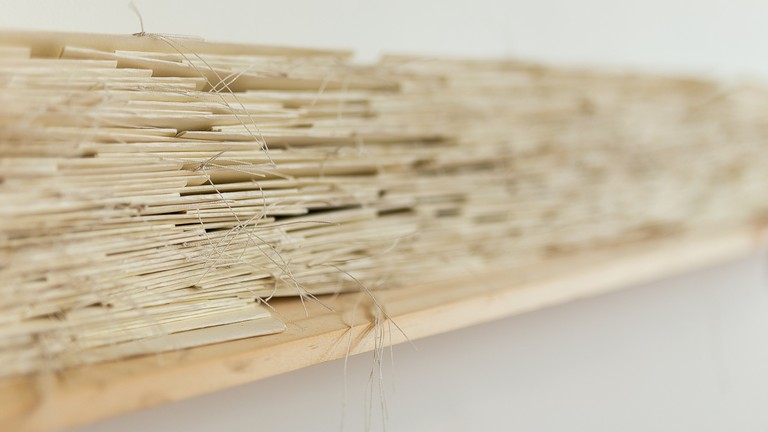
I am wary of placing too much emphasis on Carmen’s prediction. Not because I don’t think it’s important. I want to tell you about Carmen because she ends her essay with a disavowal: a promise never to return to the internet. I don’t know the details of everything that happened to Carmen after that. But I do know she broke her promise.
She returned in 1997, publishing an essay in Leonardo, arguing that the history of human invention can be read as a continuous clutching at redemption. She returned in 2003, building a replica of a medieval French city in Second Life. And a year later, publishing a review of a performance of Waiting for Godot staged on The Sims Online.
I want to tell you about this return because it means something. It means, in spite of her doubts, in spite of understanding what she was doing was perhaps against her best interests, Carmen continued being both transmitter and receiver of public feelings. It is difficult to make a rational case for this return and this is precisely my point.
Lauren Berlant’s Cruel Optimism sheds light on a system of attachment in which the object of desire is often in direct opposition to the subject’s thriving. “Cruel optimism names a relation of attachment to compromised conditions of possibility," she writes, "One makes affective bargains about the costliness of one’s attachments, usually unconscious ones, most of which keep one in proximity to the scene of desire/attrition." 4 It might be possible to read Carmen’s return as an example of cruel optimism, as a pining for closeness when closeness may be her ruin.
Capitalism feeds on feeling—on exploiting it but also regulating it. There's a certain currency of feeling—an unspoken set of rules about what is appropriate and where—and there is, as the WELL proves, grace in transgression. If it takes great leaps towards utopia for us to be able to negotiate a place for the public display of feelings, this begs the question, where should feelings go in the meantime?
I want to think about Something Felt, Something Shared as a way of rethinking the politics of exchange and where emotion is allowed to live now. The four artists included in this show, Gabrielle Amodeo, Ruby Joy Eade, Clare Hartley McLean, Kalya Ward, adopt four divergent, yet somehow complementary, strategies for imagining new homes for old feelings.
It seems appropriate to begin with Ruby Joy Eade. The lines of inquiry that bind Carmen and Eade—the online message board, a question of feelings dispersed and lapped up graciously—seem placed to suggest some kind of affinity. Eade’s work is the sum of incongruous parts: texts taken from online relationship forums, cut up, and bound inside handsewn booklets. Eade deals in the rupture that occurs with the onset of a sudden unsolicited intimacy. When bound into a book, and placed upon a shelf alongside other intimacies, the rupture compounds itself. It overwhelms, it begs sympathy be lodged in all directions, and it makes the object of this sympathy difficult to distinguish. The speaker almost becomes irrelevant. The reader does not always know where and how to position themselves in relation to what is being read.
These utterances belong to a very particular public, the relationship forum. This public is contingent on the voicing of feelings participants have earned through trauma. Knowing this, Eade’s appropriation seems nothing but benevolent. In maintaining the anonymity of the speaking subject, Eade’s work turns readers from witnesses, who are always belated, always bound by loss and futile attempts at repair, into something much more complicated. 5 Eade’s readers are potential subjects in a new kind of public, a public which knows how and when to respond to the confessional, a public that is comfortable with its feelings.
Clare Hartley McLean

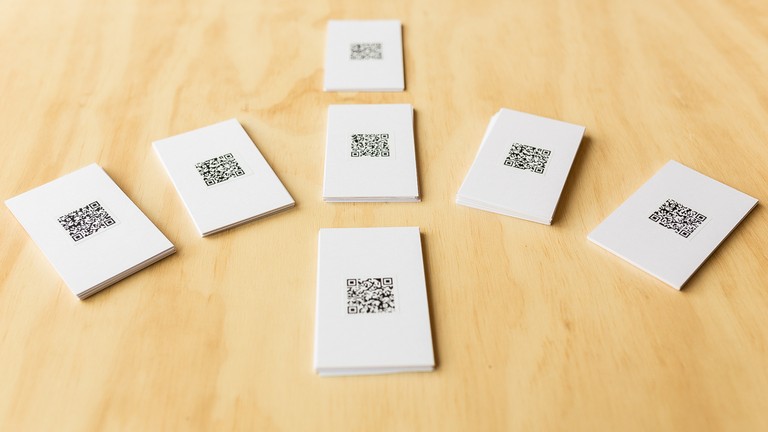
These books hinge on the apostrophe, the address, the ‘you’. At times, Eade’s books depend on their own cruel optimism, on the unfulfillable hope that, in turning the page, we might be met with a different ending to a story we already know. The form of the book allows for this optimism, and then denies, as we turn the page, as we are met with the subsequent clause, the inevitable, or implied, affirmative that follows the question, "is the internet making me depressed?"
So we are thinking about promises. And about being able to decode a certain set of signs. Clare Hartley McLean's Vibrational Counsel (the adventure of you) is an impossible language. Without the intervention of a machine, her QR Codes are impenetrable. Our phones make an oath to bring closer a secret discourse of feeling—psychic readings, comprised of sweet aphorisms, longing and calm—that wouldn’t otherwise be available to us. But what is revealed?
“The truth that is each of us is essentially alone and that we must ultimately answer to ourselves regarding our choices in life is one that resonates deeply within you,” one reading goes, “Your first loyalty is to yourself and to living your life as authentically as possible.” Once more the address is haphazard, the ‘you’ both general and particular. I sometimes recoil from brazen presumption, and elsewhere I am won over. I seek myself in places I may not be invited to. I think of myself in ways I wouldn’t otherwise. I am afraid that the light is not infinite. The path to true happiness is within me. My authentic self is a risk taker, a trailblazer. Yet there is a hazy murmur beneath this disembodied voice, a wall of static, strange implacable distortions that seem both otherworldly and disingenuous. When coupled with the vernacular of newspaper zodiac readings, a cheap and plentiful mysticism, a vernacular that at once tempts for its surety and resists rational argument, our position is thrown into ambivalence—somewhere between best wishes and cruel joke.
Gabrielle Amodeo
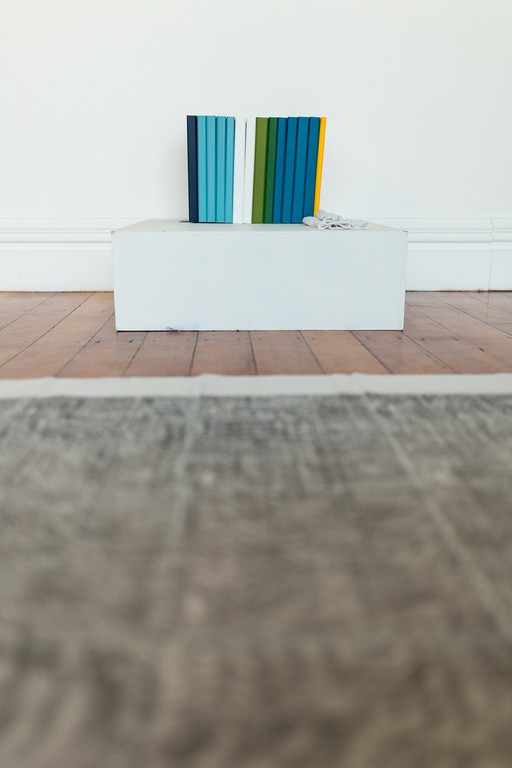
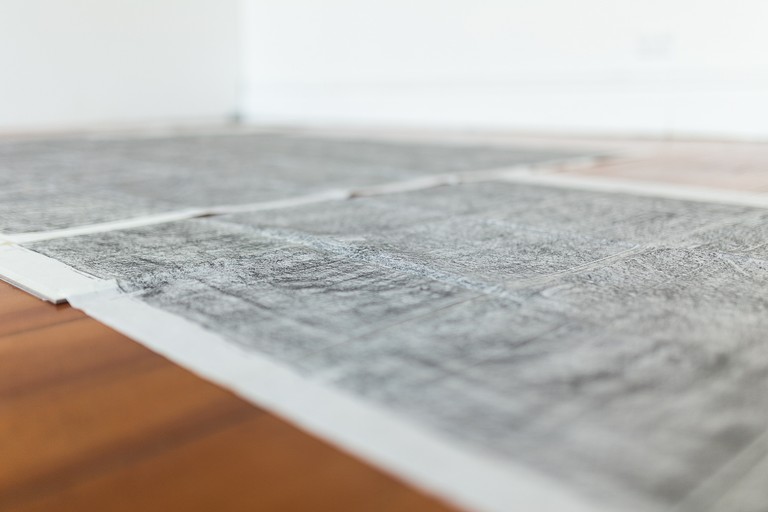
Gabrielle Amodeo’s folders also seem like a cruel joke. The home, and everything we feel about and around it—how and where we sleep, eat, fuck, and cry—cannot be contained so easily. The book demands some kind of order, however arbitrary, be placed upon a collection of information. It begs a certain mode of reading, based on learning and repeated action. The home is not so neat. Upon unfolding, the folders reveal the impossibility of transcribing memory. Pet hairs, dust and dirt, ghostly wax from a previous occupant, become part of this process of transcription, both as an interruption and as a fundamental part of a home’s architecture. There are marks where hair has become attached to the paper during the drawing process and been dragged along the floor, strange and wiry patterns, suggestive of a collapsing of time. Suggesting, that is, that the events that make up a home don’t just happen in a moment, but get stuck on repeat.
Amodeo’s facsimiled home enters into a kind of exchange. It is a record of things taken and left behind. There are the marks homes make on their occupants, memories transcribed in the brain’s circuitries that overwhelm, return in a perverse order, blurred or completely inaccurate; and there are marks we leave on homes, things that circumvent visible signs of lived in spaces—flaking paint, dents in detailing, spillages and rips. It’s more of a feeling. Something undeniably present, but which has difficulty articulating itself. Kayla Ward’s 1970’s transistor radio can help us imagine such a feeling. Playing on a loop is an audio recording of the trip William Harper cycled on the day he died in 1898 (with alterations to account for the changed architecture of Christchurch). Harper’s ghost (may have) haunted Ward’s childhood home. There were over ninety years between the two occupants, enough time for endless scrubbing, repainting, new fixtures and new ideas about what a home should be, but Harper remained. Ward’s work is an experiment in reconfiguring time—a house in conversation with a 100 year-old ghost, an obsolete technology resurrected, the veins of a city moved around after a century of development and disturbance. These things motion towards a way of imagining time and its relation to how we organise our lives that does away with any notion of progress. Instead it thrives on stuckness, on things playing over and over again, on interruptions and incomplete sentences.
Part of the impetus for using the audio recording, Ward explains, was reading an article on an early belief that sound might live forever, that it might be possible to construct a wireless radio powerful enough to hear the voices of the dead. It might still happen, but it’s not likely, given what we know now. What we say and how we say it, however, has changed. Transcribing thoughts online seems more immediate than voicing them. The familiarity of Eade’s disclosures demonstrates this. Implicit in the fear that our disclosure will be used for surveillance, for the accumulation of capital, is an acknowledgement of the posterity contained in what is shared—the fear that it might outlive us. It’s a strange double- bind, to want desperately to have an opportunity to hear something or someone once more, and to be devastated when presented with an archive of everything we’ve ever said or felt.
Kayla Ward
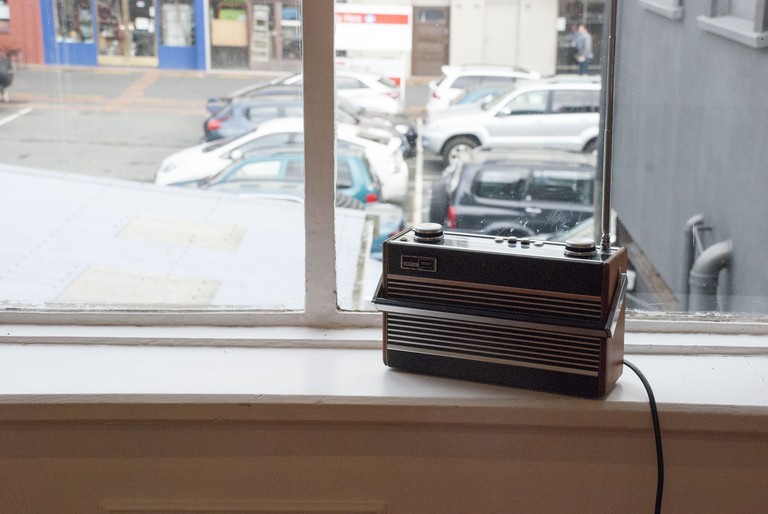
Carmen is not a metonym. She emblematizes nothing outside of her own behaviours. Yet, she is undeniably familiar. Perhaps because of her willingness to admit the unhealthiness of her attachments—to strangers, to a fictional medieval French city. Perhaps because of her unwillingness to reconcile with a public that refuses to acknowledge feeling; a public that tries to claim subjects as ultimately rational, despite overwhelming evidence to the contrary. Leslie Jamison calls sentimentality an accusation leveled against unearned emotion, in labelling something sentimental we expose our fear of feeling unmediated by nuance or decorum, "The gut reacts towards and against, seeking a vocabulary to contain excess, to name and accuse and banish it". 6 The artists in Something Felt, Something Shared claim this fear for creative potential, and in doing so rearrange the terms of what it means to speak and listen and feel. Sentimentality sustains. It is the sweetness that binds attachments that, though bad for us, offer a certain hope—against promise, against rational argument.
-
1.
“Introducing Humdog: Pandora’s Vox Redux,” Folksomony, published June 6 2011, http://folksonomy. co/?permalink=2299
-
2.
Whole Earth Catalog Articles, http://www. wholeearth.com/ articles.php
-
3.
Fred Turner, “Where Counterculture Met
the New Economy: The WELL and the Origins of Virtual Community,” Technology and Culture 46.1 (2005): 488. -
4.
Lauren Berlant, “Cruel Optimism,” differences 17.3 (2006): 21.
-
5.
Lauren Berlant, “Trauma and Ineloquence,” Cultural Values 5.1 (2006): 45.
-
6.
Leslie Jamison, “In Defence of Saccharin(e),” The Empathy Exams (London: Granta, 2014), 112-113.
